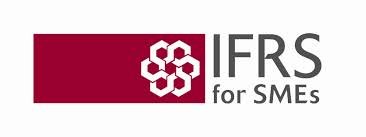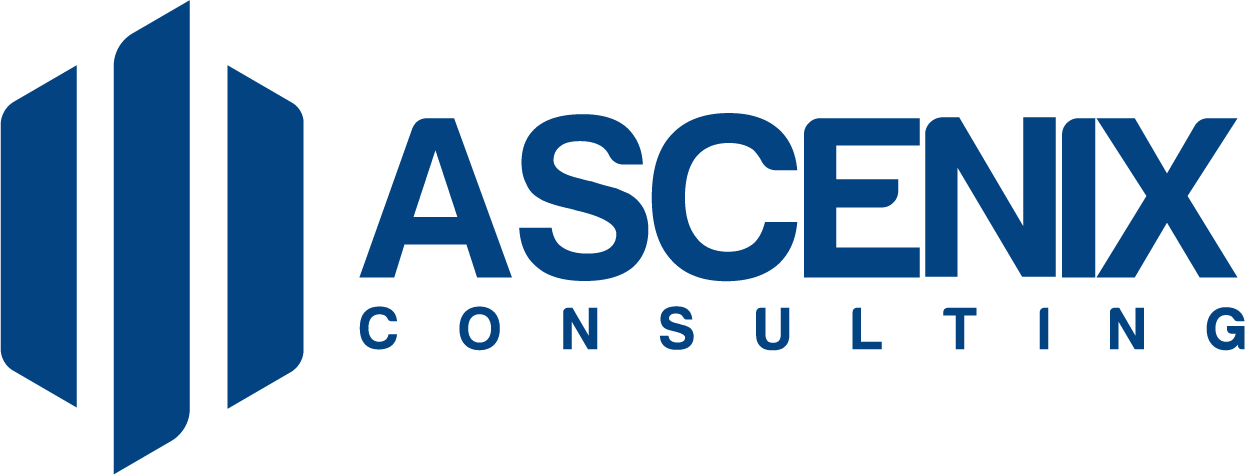- June 26, 2025
- Posted by: Akinsanya Favour Omowunmi
- Category: Articles

Abstract
In the context of the global economic crisis, small and medium enterprises are most affected. That is why the problem that arises more frequently is the harmonization of national legislation with European legislation. The necessity to implement specific standards for SMEs appeared in order to provide them with a beneficial framework for better economic and financial market positioning. In this respect, the International Accounting Standards Board issued in 2009 IFRS for SMEs, a reference aimed at the simplification of accounting procedures, reconciliation, and the increase of confidence of potential investors (stakeholders). The question of compatibility of these standards appears in situations where they may choose to use IFRS for SMEs. This paper aims to evaluate the implementation of IFRS for SMEs.
Context and Literature
SMEs are known as the Small and Medium-Sized Enterprises. They include businesses with a limited amount of personnel and financial indicators. SMEs make a considerable contribution to the global economy through employment creation, innovation, and growth in the economy. SME definitions can differ by country; however, they usually take into consideration Number of employees, annual turnover, and total assets
In Nigeria, the definition of a Small and Medium Enterprise (SME) is provided both by the Small and Medium Enterprises Development Agency of Nigeria (SMEDAN) and the National Bureau of Statistics (NBS), in accordance with the number of employees and resources (excluding land and building):
Small Enterprise: Number of employees: 10-49; Assets: ₦5 million – ₦50 million Nigerian Nairas
Medium Enterprise: Workforce: 50-199, Wealth: ₦50 million – ₦500 million
In Nigeria, SMEs play a significant role in economic growth, with a huge percentage taking part in employment and industrial production.
Harmonization, as defined by Paul Holt and Cheryl Hein, refers to the process of lessening the disparities in accounting with a view to promoting standardization (Holt and Hein, 2001). The impact of the harmonization is the growing comparability of the financial statements issued by the companies of various countries. Nobes and Parker state that the process of harmonization may be considered as the enhancement of the comparability of practices across countries since it forms the boundaries of the variation (Nobes and Parker, 2004). Also, accounting harmonization can be explained as a bargaining process between the world specialist organizations so as to make an understanding on world comparability (Zeff, 1981). Rather, Nicolae Feleaga regards harmonization as a course in which regulations that differ in various countries are brought into comparison (Feleaga, 1999, p. 36).
By 2001, the International Accounting Standards Board (IASB) had introduced a project that was to lead to the development of an accounting standard specifically designed to suit the needs of small and medium-sized entities (SMEs). To facilitate this initiative, a working group made up of experts was formed by IASB and charged with the responsibility of availing relevant information, case studies, and comments on major issues alongside proposing possible solutions. The initial official publication concerning standards in SMEs was made in June 2004 when the IASB released the discussion paper prepared as “Preliminary Views on Accounting Standards in SMEs.”
The following were the key problems identified in the discussion paper (IASB, 2009b, p. 6):
- Does IASB need to come up with special financial reporting standards for SMEs?
- What can be the aims of a package of financial reporting standards for SMEs?
- To whom would IASB requirements on SMEs be targeted?
- What is one of the measurement problems facing an entity, and how might the entity overcome the problem?
- Can an entity that uses IASB standards in SMEs choose to apply treatment allowed in an IFRS that is different from that in the IASB equivalent of the standard for SMEs?
- How should the board work on developing IASB standards for SMEs?
- How far should the concepts and principles be the basis of SME standards?
- When full IFRSs are mandatory, how then should they be modified to apply to SMEs?
- How should standards of IASB covering SMEs be published?
The objective of introducing IFRS for SMEs is to provide a framework to generate relevant, reliable, and useful information characteristic of a set of high-quality, easily understood information to be applied at the SME level (Grosu and Bostan, 2010, p. 2).
Adopting IFRS for SMEs as the regulatory framework for financial reporting offers several advantages:
- These standards promote international comparability across the financial statements of a wide range of entities.
- They enhance the mobility of accounting and auditing services.
- The standards provide harmonized financial information that benefits various stakeholders, including investors, business partners, and creditors. Decision-making based on consistent, comparable data can contribute to lower capital costs.
- Implementation of the standards ensures a unified accounting language for communicating financial information.
- They offer significant support to preparers, especially in the preparation of consolidated financial statements.
- They facilitate cross-border trade and support foreign mergers and acquisitions.
- IFRS for SMEs encourages the international expansion of companies.
- The use of uniform standards strengthens confidence in global financial reporting and better satisfies the informational needs of financial statement users (Grosu & Bostan, 2010, p. 3).
- Enhanced comparability simplifies financial statement analysis.
According to Grosu and Bostan (2010, p. 2), the application of IFRS for SMEs “will lead to a high degree of comparability of financial statements, increasing the confidence of users of SMEs in financial reporting, and will cause a significant reduction in costs for national reporting standards.”
Despite the benefits, the implementation of IFRS for SMEs is not without challenges:
- The standards are relatively complex, requiring the adoption of new methodologies, internal process redesign, and staff training on the new accounting system.
- Stakeholders familiar with existing national accounting rules may face resistance and increased costs when adapting to the new framework.
- In jurisdictions where tax authorities require separate financial statements for taxation purposes, companies may incur additional costs due to differences between IFRS for SMEs and national regulations, particularly in areas such as taxation, profit distribution, and accounting regimes.
- Locally operating companies with a small number of shareholders may not realize significant benefits, as harmonization under existing national frameworks may already be sufficient.
It is well established that IFRS for SMEs allows for greater flexibility in the application of professional judgment. As a result, the same accounting standard may lead to different recognition and reporting outcomes for identical transactions in financial statements (Grosu & Bostan, 2010, p. 3).
In 2004 and 2005, the Council reviewed the responses to the discussion document and decided that an International Financial Reporting Standard for Small and Medium-sized Entities (IFRS for SMEs) was necessary. Meanwhile, during the same period, numerous countries indicated their preference to adopt IFRS for SMEs instead of creating their own national or regional standards. As a result, the council chose to proceed by circulating an exposure draft of the IFRS among SMEs.
To boost this initiative, the council planned consultations with important economic stakeholders such as the designer of the financial statements of the SMEs as well as those who use them to make the decisions. The discussions centered on how to translate the principles of recognition and measurements of full IFRSs to be applied in the SME environment.
In February 2007, the IASB released an exposure document of the proposed IFRS forSMEs. The aim of the draft was to introduce simplified and self-sufficient support of accounting standards, which would be relative to the non-listed and small entities. Although the development of the proposed IFRS for SMEs was modeled on full IFRSs—which are primarily directed at the needs of public sector entities with securities listed on a public market—consideration was made to enhance the applicability of the proposed standard to serve the needs of the SME financial statement users and balance the benefits of reporting and costs inherent in such reporting.
The exposure draft has considered five primary categories of simplifications to full IFRSs (IASB, 2009b, p. 8).
- Other issues in the IFRSs were omitted as they are not applicable to the SMEs in general. In the case where an IFRS provides an accounting policy selection
- Streamlining of most of the rules on how to identify and estimate assets Liabilities, income, and expenses that are entirely IFRS;
- Much fewer disclosures;
- Redrafting simplified.
Reference
- Grosu V., Bostan, I. (2010) IAS/IFRS standards for SMEs and the impact on the Romanian accounting system, International Journal of Academic Research, vol. 2. no. 4., accessed on November 2010 at http://www.ijar.lit.az/pdf/6/2010%284-41%29.pdf.
- Holt, P., Hein, C.D. (2001) International Accounting, 5th edition, Dame Thomson&Learning, Cincinnati, Ochio, pp.21-23
- IASB (2009a) IFRS for SME’s, accessed November 2010 at http://eifrs.iasb.org/eifrs/sme/en/IFRSfor SMEs2009.pdf.
- IASB (2009b) IFRS for SME’s Basis for conclusions, accessed November 2010 at http://eifrs.iasb.org/eifrs/sme/en/IFRSforSMEsBasisforConclusions.pdf
- Nobes, C., Parker, R. (2004) Comparative International Accounting, 8th edition, Prentice Hall-Financial Times, London, , pp.53-95.
- Raffournier, B., Comptabilité internationale, In Colasse, B. (2009) (coord.), Encyclopédie de Comptabilité, Contrôle de Gestion et Audit, 2ème édition, Éditions Economica, Paris, pp.459-470.
- Ristea, M., Dumitru, C.G.(2005) Contabilitate aprofundata, Editura Universitara, Bucuresti, p.33.
- Small and Medium Enterprises Development Agency of Nigeria (SMEDAN) & National Bureau of Statistics (NBS). (2017). SMEDAN and National Bureau of Statistics collaborative survey: Selected findings (2017). https://smedan.gov.ng/
- Zeff, S.A. (1981) The International Harmonisation of Accounting Standards, Barcelona, IV Congreso de la EEAA.

